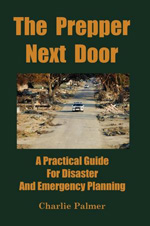Cleaning a bookshelf, I came upon an older book: Totally New 2nd Edition Pistol & Revolver Digest published by DBI. It must be old; the copyright date was listed as MCMLXXIX. A Colt Combat Commander cost $276 back then. I’m sure I bought it new, which makes me feel old.
I flipped to an article I enjoyed reading years ago: “For the One-Gun Man” by Charles A. Skelton. Skelton, a devoted handgunner, chose the 357 magnum revolver. With it he included a portable Lyman 310 reloader and even a bullet mold to be carried afield.
We’re never limited to one gun, but it gets the brain cells turning to think about what gun we’d choose and why. What would a one-gun prepper go with? What are some common choices?
Outdoorsmen who hunt big game and are concerned mainly about wilderness survival might select a big-game bolt action hunting rifle with a scope and a sling. A 30-06 could reliably take any animal in North America. They like the simplicity, reliability, and ruggedness of the bolt action.
Hardcore survivalists, especially the old-timers, might select a 7.62 mm NATO military-style semiautomatic rifle, like the M1-A. These guns are usually fed with detachable 10 or 20 round magazines. Their reasoning is that this is the best caliber for self-defense under WROL battlefield conditions. Plus, in a pinch, it could be used to secure big game. The downside is that these weapons are heavy.
Other preppers, especially younger guys, might feel the need for a defensive rifle, but be satisfied with a 5.56 mm AR-15. Even if the 5.56 mm isn’t ideal for taking big game, they’d say personal defense is the paramount concern. More 5.56 mm ammo can be carried than for the heavier caliber. The AK-47 is another popular choice among rifle-toting preppers.
Some will choose the 22 LR. It’s low in power compared to the weapons above, but ammo is cheap and tiny. A thousand rounds can easily be carried in a backpack. If small game is abundant and big game rare, and hunting a primary concern, the 22 rifle makes a certain sense.
Although it lacks the range of a high-powered rifle, the 12 gauge shotgun might be the most versatile weapon. Many preppers love their Remington 870s or their Mossberg 500s. With rifled slugs, it can be used to secure deer or bear. With birdshot, you can secure small game. With buckshot, a 12 gauge is a formidable close-range self-defense weapon. A major drawback to the shotgun is the bulk and weight of the shotgun shells.
The above weapons are great choices under certain circumstances. They all suffer one limitation: they’re bulky. An urban prepper couldn’t walk down the street with any of these weapons without drawing attention. After many disasters, there isn’t a complete break down of social order. After a hurricane or tornado, a few looters might be present, but so will be police. If you walk down the street with a 7.62 rifle, the police might confiscate it. It’s not that they’re trying to take away your gun rights. They don’t know what you’re up to. They’re enforcing the existing law.
For self-defense and daily carry, a reliable defensive sidearm, like the Glock 19, is a popular choice for urban preppers. It’s unobtrusive. You’re more likely to have it with you when you need it in a self-defense situation. In an urban setting, hunting for food might not be something you could count on anyway, so the pistol’s weakness in the area might not matter. And, if you have a concealed weapon permit, you’re on strong legal ground to carry your gun after common disasters like hurricanes.
For many preppers, one gun isn’t enough. They’d say you need a complete battery, capable of serving many functions. Many could happily get by with a collection of three to five weapons. Going through the thought process of selecting only one weapon forces us to prioritize and evaluate our needs.
If you could only have one firearm, to serve you for the rest of your life, what firearm would you select? What if you could have only two? Only three?
Charlie P, author, The Prepper Next Door: A Practical Guide For Disaster And Emergency Planning.
